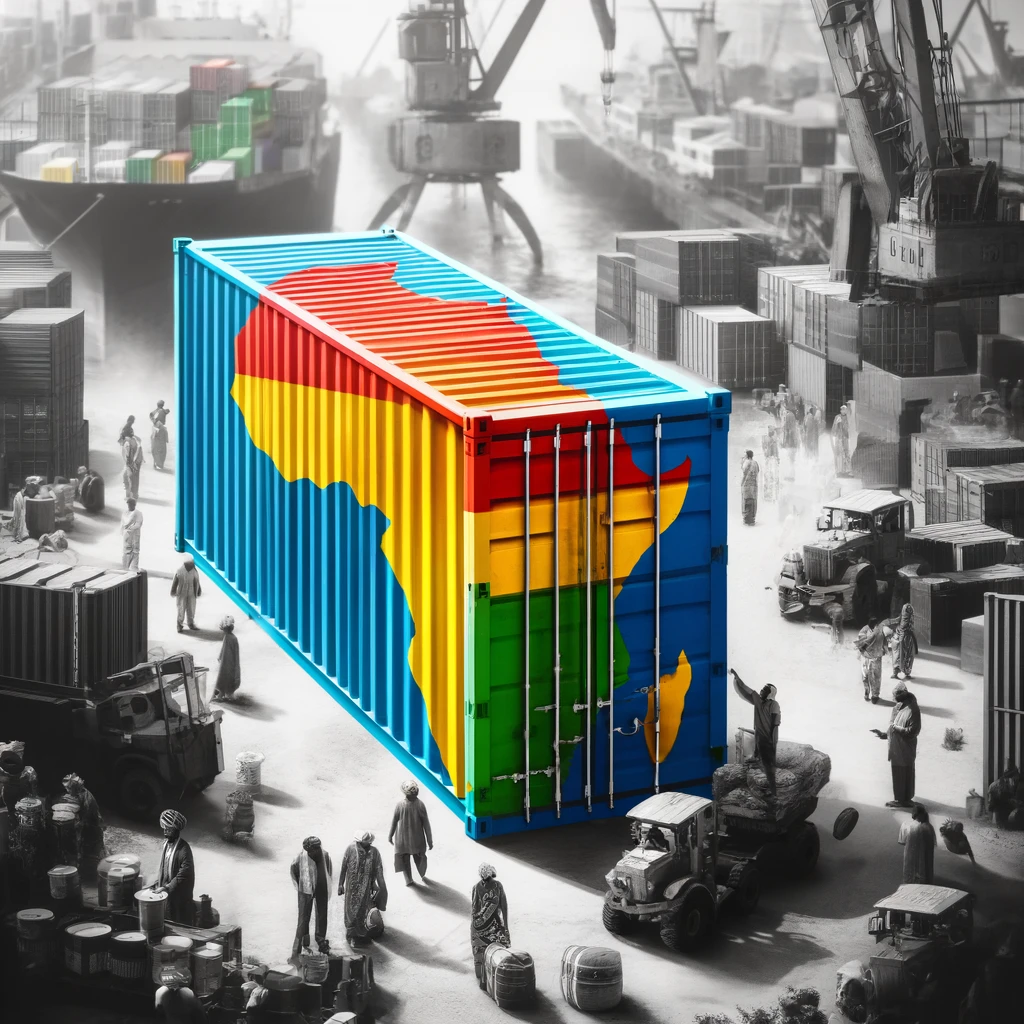
Introduction
On 29th September, the world observes the International Day of Awareness of Food Loss and Waste Reduction, a day that shines a spotlight on one of the most pressing issues of our time: food waste. In a world where 820 million people face hunger, the staggering levels of food loss and waste are not just a logistical or environmental challenge but also a profound humanitarian issue. Globally, approximately 13.2% of food is lost between the stages of harvest and retail, and an estimated 19% of food is wasted by households, food services, and retail sectors.
The problem is magnified in Africa, where 37% of food is lost post-harvest, exacerbating food insecurity and limiting economic opportunities for farmers.
This article will delve into the causes, consequences, and solutions to food loss and waste on both a global and African scale, offering insights into how we can collectively address this challenge and contribute to Sustainable Development Goal 12.3, which aims to halve global food waste by 2030.
The Global Food Waste Crisis
The global food system is under enormous strain. Despite producing more than enough food to feed everyone on the planet, the United Nations Food and Agriculture Organization (FAO) estimates that around 1.3 billion tons of food is lost or wasted each year. This translates to nearly one-third of all food produced globally. The causes of this waste vary by region, but they generally include inefficiencies in agricultural production, storage, transportation, retail, and consumption.
The Environmental Impact
Food waste is not only a loss of resources like land, water, and energy; it also significantly contributes to climate change. According to the UN Environment Programme (UNEP), food loss and waste account for 8% to 10% of global greenhouse gas (GHG) emissions. When food decomposes in landfills, it produces methane, a greenhouse gas that is 25 times more potent than carbon dioxide over 100 years. The carbon footprint of food waste is massive; if food waste were a country, it would be the third-largest emitter of greenhouse gases, after China and the United States.
The Economic Cost
The economic consequences of food loss and waste are equally alarming. Globally, food waste costs around $940 billion annually. The financial burden is not confined to the developed world; low-income countries, particularly in Africa and Asia, also face significant economic losses due to inefficiencies in post-harvest systems. For instance, sub-Saharan Africa loses an estimated $4 billion annually due to post-harvest food loss.
Food Loss and Waste in Africa
In Africa, food loss predominantly occurs at the post-harvest stage. Farmers often lack the necessary infrastructure—such as adequate storage facilities, cold chains, and transportation networks—to prevent crops from spoiling before they can be sold or consumed. A report by the African Union Commission revealed that nearly 50% of fruits and vegetables produced in sub-Saharan Africa are lost post-harvest.
The Role of Smallholder Farmers
Smallholder farmers, who produce 80% of the food in sub-Saharan Africa, are disproportionately affected by food loss. Inadequate storage and transportation systems, coupled with poor access to markets, lead to significant crop losses. Cereals, fruits, and vegetables are particularly vulnerable, with post-harvest losses for some crops reaching up to 40%. The loss of these crops not only reduces farmers’ incomes but also threatens food security across the continent.
Why It Matters
Africa is home to 239 million undernourished people, accounting for approximately one-fifth of the global total. In regions where food insecurity is prevalent, every lost crop can be the difference between hunger and nourishment. The African Development Bank (AfDB) estimates that reducing post-harvest losses by 1% could increase food availability by 10 million tons per year.
Technological Solutions for Reducing Food Loss and Waste
Addressing food loss and waste requires a multi-faceted approach that includes technological innovations, policy changes, and consumer behavior shifts.
Mobile Processing Units
One innovative solution gaining traction in Africa is the use of mobile food processing units. These mobile units can be deployed to farms immediately after harvest, allowing farmers to process their crops on-site, which reduces the likelihood of spoilage. For example, mobile processing units for mangoes in Kenya and tomatoes in Nigeria have significantly reduced post-harvest losses.
Cold Storage and Transportation
Investing in cold chain infrastructure—the use of temperature-controlled environments for storage and transportation—is essential for preserving perishable goods. Projects such as Solar-Powered Cold Storage units in countries like Uganda and Ghana have shown promise. These systems are affordable, sustainable, and can be implemented in remote areas with limited access to electricity.
E-Commerce Platforms
E-commerce platforms are helping connect farmers directly with markets, reducing the need for intermediaries and decreasing the time food spends in transit. In Rwanda, platforms like Kasha allow smallholder farmers to sell their produce directly to consumers and retailers, thereby minimizing food loss during distribution.
Behavioral and Policy Changes
While technology plays a crucial role, consumer behavior and governmental policies are equally important in the fight against food loss and waste.
Consumer Education
In developed countries, most food waste occurs at the consumer level. Consumers in North America and Europe waste approximately 95-115 kg of food per capita per year, compared to 6-11 kg in sub-Saharan Africa and South Asia. Educating consumers on how to reduce waste through better meal planning, proper storage, and using leftovers can significantly reduce food waste at the household level.
Policy Interventions
Governments worldwide are taking steps to reduce food loss and waste. For example, France became the first country to pass a law prohibiting supermarkets from discarding unsold food. Instead, the food must be donated to charities or repurposed. Similar policies have been adopted in Italy, Denmark, and other European nations.
In Africa, countries like Nigeria and Ethiopia are implementing national post-harvest loss reduction strategies. The Nigerian Federal Ministry of Agriculture has launched programs to promote the use of hermetic bags for grain storage, which can reduce post-harvest losses by up to 50%.
The Path Forward: Achieving SDG 12.3
With only six years left to meet the Sustainable Development Goal (SDG) 12.3 target of halving food waste and reducing food loss by 2030, the global community must accelerate its efforts. The stakes are high—not just for food security but also for climate change, economic development, and environmental sustainability.
Integrated Solutions
Reducing food loss and waste requires an integrated approach that involves all stakeholders: governments, businesses, farmers, consumers, and international organizations. The United Nations Environment Programme (UNEP) has emphasized the importance of creating an enabling environment where these stakeholders can collaborate and share best practices. Public-private partnerships, such as the Global Food Loss Initiative, are essential for driving innovation and scaling up successful models.
Financing for Food Systems
Increasing financial investment in food systems, particularly in developing countries, is crucial for reducing food loss and waste. The World Bank estimates that Africa requires approximately $30-50 billion annually in investments in agricultural infrastructure, including post-harvest technologies, to meet its food security needs. International financial institutions, NGOs, and private-sector actors must work together to channel resources into projects that have a demonstrable impact on food loss and waste reduction.
Conclusion
Food loss and waste are critical global issues that impact hunger, climate change, and economic development. On a global level, addressing this issue is key to achieving the Sustainable Development Goals and creating a more equitable and sustainable future. In Africa, where food security is fragile, the reduction of post-harvest losses has the potential to significantly improve lives by increasing food availability, boosting incomes for farmers, and protecting natural resources.
The solutions to food loss and waste are within our reach. Through technological innovations, policy changes, consumer education, and increased financial investment, we can reduce the amount of food lost and wasted and create a more sustainable, resilient global food system. The International Day of Awareness of Food Loss and Waste Reduction serves as a reminder that every action counts—and that by working together, we can make a difference.
Sources:
Global and African Food Waste Statistics
- Food and Agriculture Organization of the United Nations (FAO). (2019). The State of Food and Agriculture 2019: Moving Forward on Food Loss and Waste Reduction. FAO. FAO Website
- World Bank. (2011). Missing Food: The Case of Post-Harvest Grain Losses in Sub-Saharan Africa. World Bank Report No. 60371. World Bank Website
- UN Environment Programme (UNEP). (2021). Food Waste Index Report 2021. UNEP. UNEP Website
Environmental Impact of Food Waste
- UNEP. (2021). Emissions Gap Report 2021. UNEP. UNEP Website
- FAO. (2013). Food Wastage Footprint: Impacts on Natural Resources. FAO. FAO Website
- World Resources Institute (WRI). (2019). Reducing Food Loss and Waste: Setting a Global Action Agenda. WRI Website
Economic Impact
- FAO. (2022). The Economic Costs of Food Loss and Waste. FAO Website
- African Development Bank (AfDB). (2020). The Future of Food and Agriculture: Trends and Challenges. AfDB Website
Food Loss and Waste in Africa
- African Union Commission. (2019). Post-Harvest Loss Reduction Strategy for Sub-Saharan Africa. AU Website
- International Fund for Agricultural Development (IFAD). (2020). Rural Development Report 2020: Fostering Inclusive Rural Transformation. IFAD. IFAD Website
- FAO. (2018). Global Food Losses and Food Waste – Extent, Causes and Prevention. FAO. FAO Website
Technological Solutions
- World Bank. (2020). Innovation for Food Systems: Case Studies of Mobile Processing Units and Cold Storage. World Bank Website
- Rockefeller Foundation. (2017). YieldWise Initiative: Tackling Food Loss in Africa. Rockefeller Foundation Website
- Global Cold Chain Alliance (GCCA). (2021). Africa Cold Chain Solutions and Solar-Powered Storage. GCCA Website
Consumer Behavior and Policy Interventions
- OECD. (2020). Food Waste Reduction and Management: Best Practices and Policies in OECD Countries. OECD Website
- European Union (EU). (2016). France’s Law on Food Waste Reduction and Other European Initiatives. European Commission Website
- Nigeria Federal Ministry of Agriculture and Rural Development (FMARD). (2019). National Post-Harvest Loss Reduction Strategy. FMARD Website
Sustainable Development Goals (SDGs)
- United Nations Development Programme (UNDP). (2020). SDG 12.3: Halving Global Food Waste by 2030. UNDP Website
- UNEP. (2018). Global Food Loss and Waste Reduction Initiative: Scaling Best Practices for SDG 12.3. UNEP Website
General Reports and Resources
- FAO, IFAD, UNICEF, WFP, WHO. (2020). The State of Food Security and Nutrition in the World 2020: Transforming Food Systems for Affordable Healthy Diets. FAO Website
- World Bank. (2021). Post-Harvest Losses in Africa: Lessons Learned and Best Practices. World Bank Website


